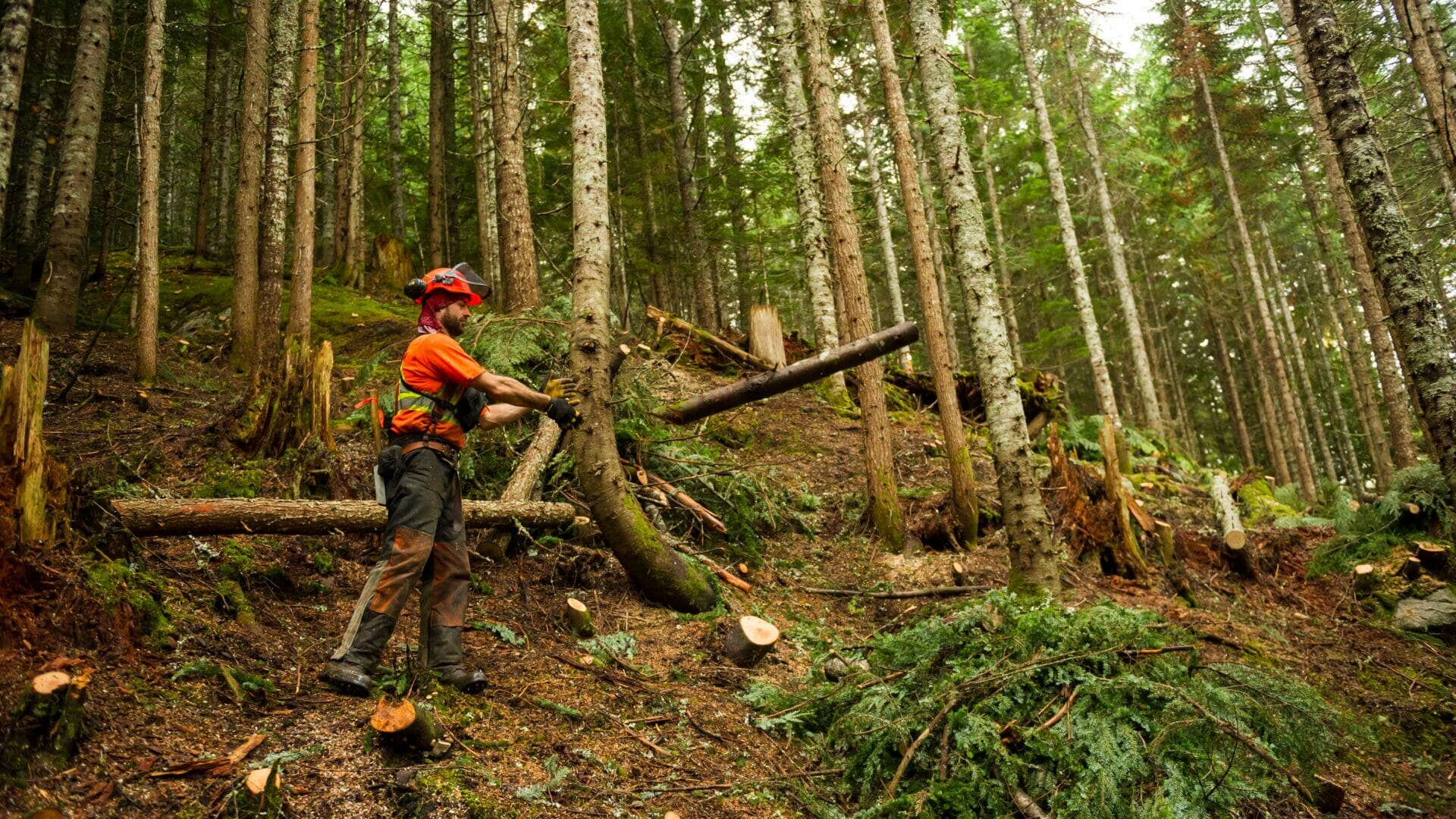
Whistler is surrounded by forest and is at risk for wildfires. Wildfire fuel reduction (reducing the amount of highly combustible organic matter such as trees and woody debris) is one component of Whistler’s Community Wildfire Resiliency Plan and includes techniques such as fuel thinning and fire breaks.
Fuel management in Whistler
The Resort Municipality of Whistler has been conducting wildfire vegetation management projects on Crown and municipal lands since 2004 to reduce the risk of wildfire to our community. The primary goal is to reduce forest fuel loads within the wildland-urban interface to reduce the ability of fire to spread from the forest into the community and vice versa, and to make wildfires easier to fight. Fuel thinning will be discontinued when the fire hazard goes to extreme and will resume when the fire hazard is lower.
Sometimes projects need to burn some of the wood debris. We will alert the public through social media. There is no need to report smoke from fuel thinning projects.
Current Projects
Whistler Cemetery wildfire fuel thinning project
Current status
Fuel thinning in the Whistler Cemetery is scheduled to commence April 22, 2025 and will take approximately four weeks to complete. The project may be interrupted if there is a high or extreme wildfire risk. Work will occur Monday to Friday from 7 a.m. to 5 p.m., and will involve hand pruning, machine removal, and chipping.
Impacts
The treatment unit includes the entire Cemetery property. The second growth forest is identified as “moderate” to “high” risk of ignition and wildfire movement. In fuel thinning, mature and deciduous trees are left, while lower branches are pruned, and unmanaged second-growth trees, ground brush and debris are removed. The work involves the use of heavy machinery, saws and a chipper resulting in loud noise at times. The crew will be following the RMOW Noise Bylaw hours of work. There are no trails affected by this work however the Cemetery will be closed for viewing and services until this work is complete.
Funding
This project is funded in part by the Government of Canada through the Disaster Mitigation and Adaptation Fund.
Map

Emerald West and Brio Extension
Status
Burning was completed April 15, 2025 and smoke may be visible over the next few weeks from smoldering piles that are being supervised.
Impacts
Fuel management crews conducted planned burns in the Emerald West and Brio Extension areas of Whistler on Tuesday, April 15. Crews burned piles of woody debris for the purpose of wildfire risk reduction
Completed projects
We’ve completed fuel management work in the following areas:
- Emerald west, 2024
- Brio, 2024
- Brio extension, 2024
- Panorama Ridge Brio, 2023
- Kadenwood Gondola, 2023
- Riverside Cheakamus Crossing, 2023
- Rainbow 1 neighbourhood project, 2023
- Cheakamus Lake Road Fuel Treatment, 2021
- Cheakamus Lake Road, 2020
- Spruce Grove/Lost Lake Park, 2019-20
- Nesters Hill, 2020
- High school site fuel thinning
- Taluswood wildfire fuel thinning, 2021-22
- Rainbow 2, 2022
Process and goals
Vegetation management focuses on leaving mature and deciduous trees, while removing ground brush and debris, pruning lower branches, and removing tight, unmanaged second growth trees. This is accomplished by:
- Reducing the number of trees in the stand to open the upper tree canopy and reduce ability of fire to move from tree to tree;
- Focusing on removal of small diameter trees and retaining fire-resistant species such as old growth, Douglas-fir and deciduous trees;
- Reduce fine woody surface debris, while retaining larger coarse woody debris for habitat and soil productivity;
- Pruning trees to reduce ladder fuels between the ground and the forest crown; and
- Removing dangerous trees to protect workers, while maintaining high value wildlife trees where possible.
In addition to reducing forest fuel loads, secondary objectives are to protect critical infrastructure and facilities in Whistler, restore open forest conditions and demonstrate the principles and practices of the FireSmart program.
Fuel breaks
The RMOW completed a study in 2012 which was incorporated into the Community Wildfire Resiliency Plan to identify where landscape level fuel breaks should be created along forest service roads around Whistler. The focus is on reducing tree densities in unmanaged second growth, rather than removing old growth or deciduous trees. Thinning stands within 100 – 200 m of each side of the road reduces the fuel available to feed fire growth and creates safer, defensible areas for firefighting crews to work in.
Contact
Manager of Climate and Environment
Luisa Burhenne
lburhenne@whistler.ca

